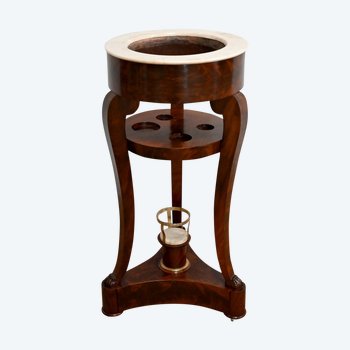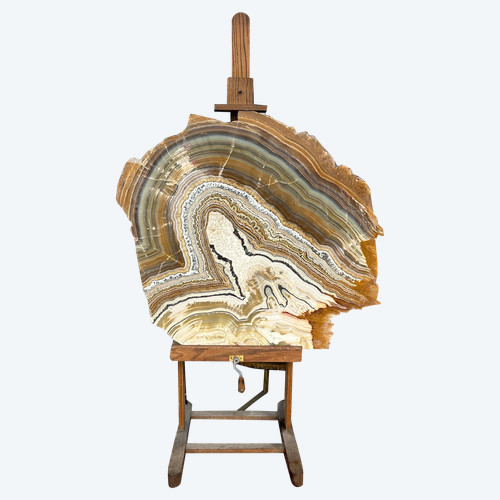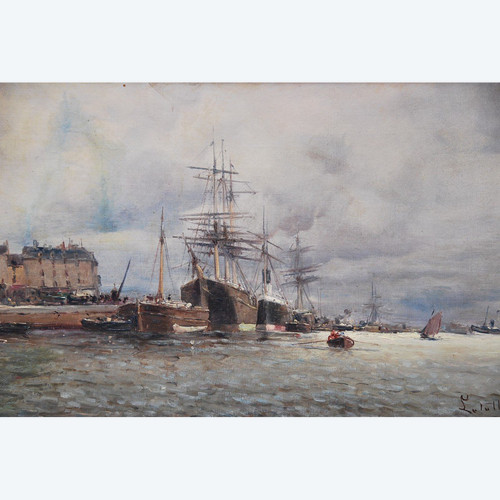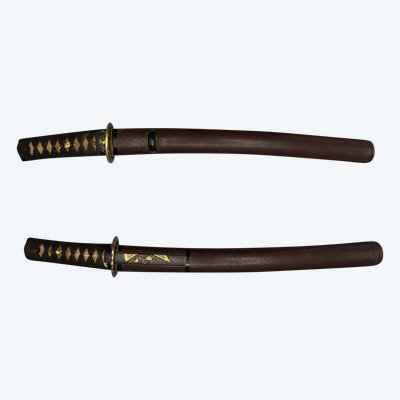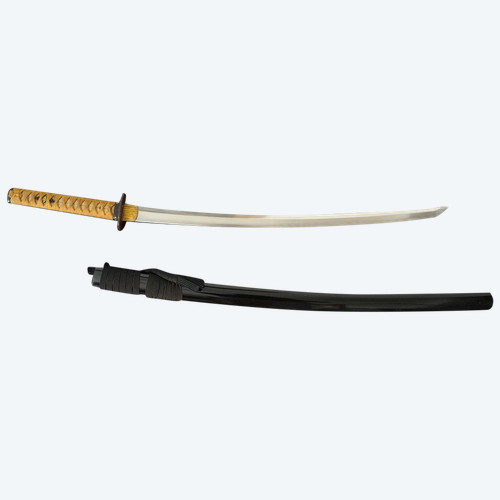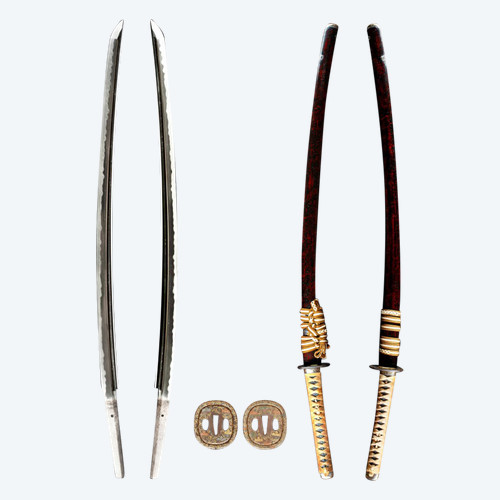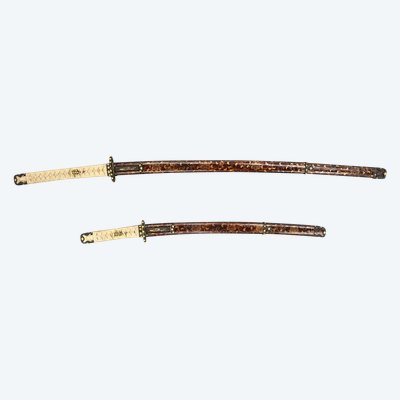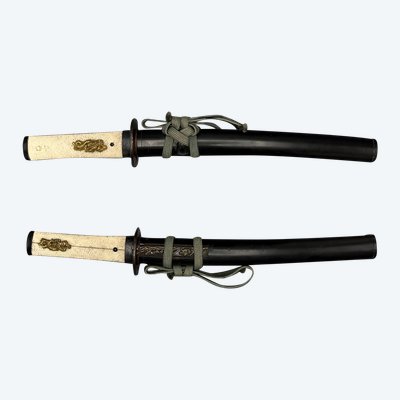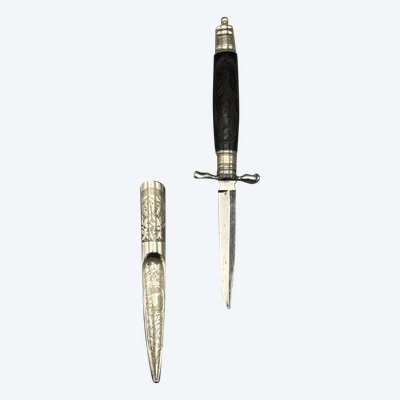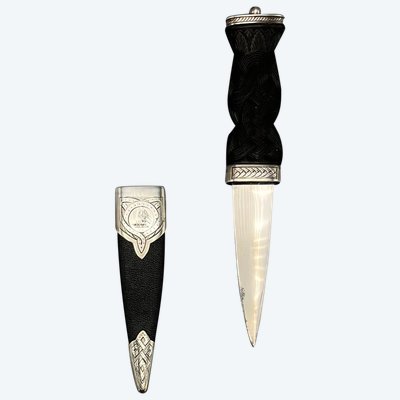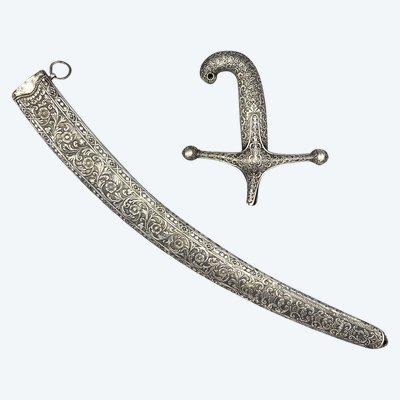This description has been translated and may not be completely accurate. Click here to see the original
SABRE called Wakisashi with NBTHK certificate
Attributed to Echizen Kanenori
Japan - Momoyama period (1573-1603)
Steel, wood, lacquer, silk, brass, shakudo, gold, copper, silver
Length of cutting edge (Nagasa): 35.6 cm
Nakago: 12.4 cm - Curvature (Sori): 1.2 cm
Weight: 346 g
Shobu Tsukuri blade, Mune Takashi, Gunome temper line.
Nakago Funa Gata (boat hull), Ha Hagari Kuri Jiri (irregular "U").
Yujo-habaki in copper and silver.
Wooden Saya, covered in textured black lacquer decorated with geometric motifs. The Ōtani Yoshitsugu family mon (1554-1600) representing two crossed falcon feathers is depicted in green glitter lacquer three times. The art of falconry was highly esteemed among the warrior class; the hawk was admired for its fierce and powerful appearance. During the medieval period, the wearing of two falcon feathers on either side of the Murai-kan (headdress) was a privilege reserved for officers.
The stylized tree motif in green glitter lacquer is featured twice.
Koigushi, Kojiri and Kurigata in wood covered with black lacquer.
Kogatana with Kotsuka in shakudo-covered copper, engraved with the Ryū dragon enhanced with brass; steel blade signed.
Wooden Tsuka, stingray-covered and braided with navy-blue silk, signed.
Tsuba Naga Maru Gata in openwork iron, decorated with a gold-embellished samurai riding a carp - a symbol of perseverance and bravery, in a rough sea with silver buttons. It could well be the legend of the Koi carp and the Yellow River's ascent.
Silver-coated brass menuki representing two dragons.
Fuchi Kachira - hallmarked, in shakudo-covered copper, decorated with a succession of rough seas with gold and silver buttons.
Seppa in gilded copper.
Item no.: 5547
Text and photos © FCP CORIDON
Ref: 40CBC94F7L

